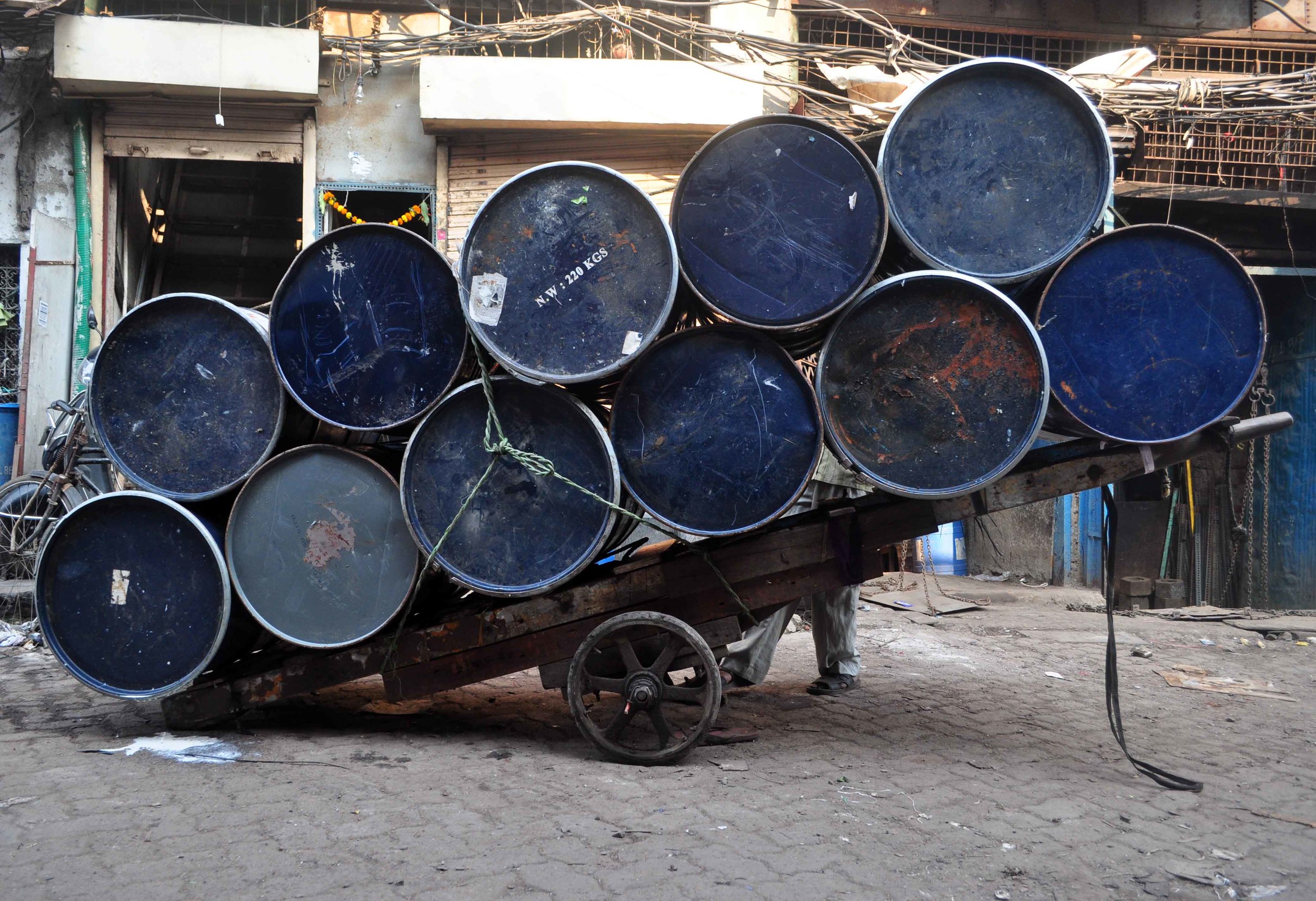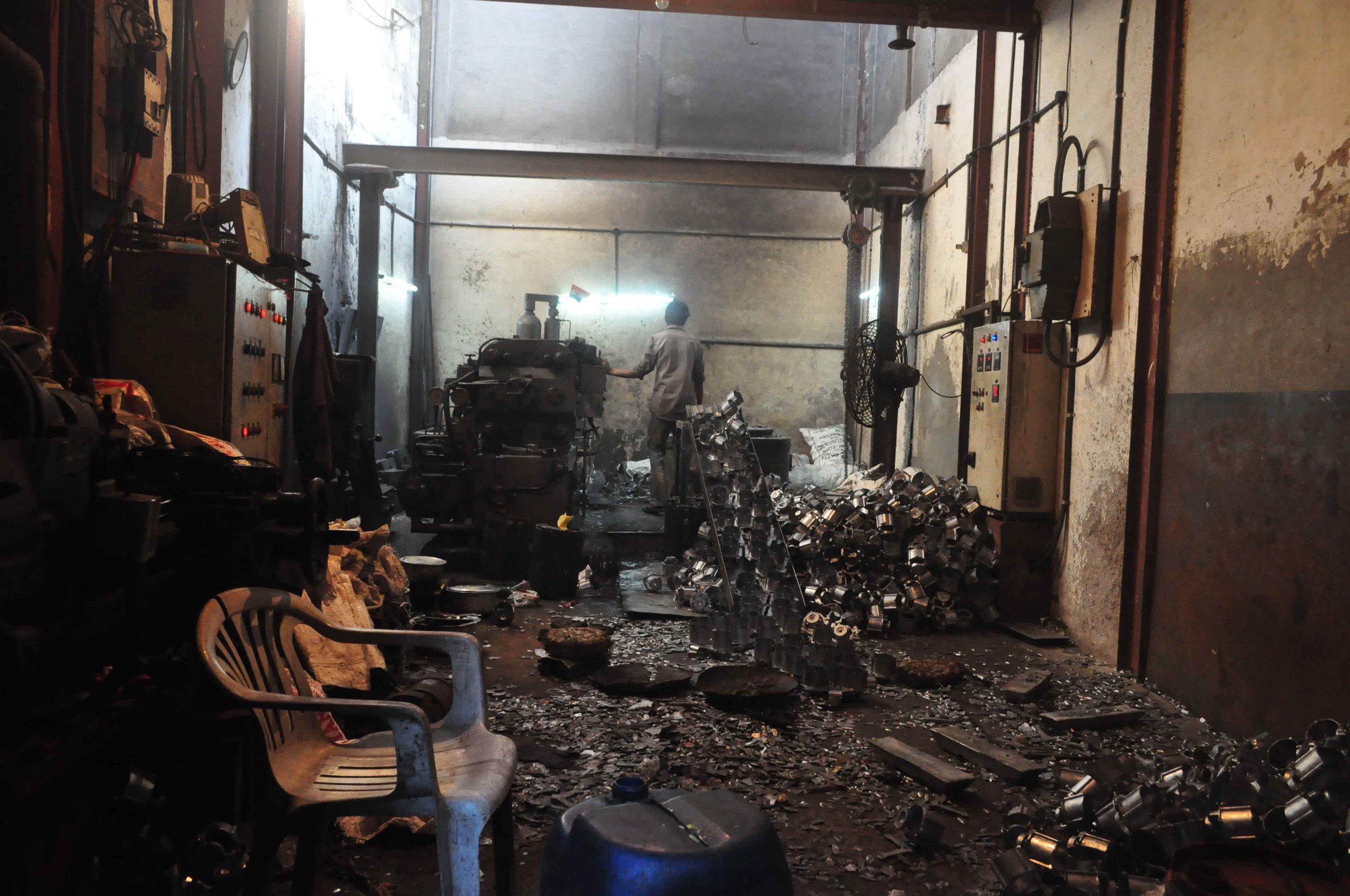 Ask someone to blindfold you and lead you through Dharavi. Listen. Ask the guide to shout out if someone does the very Mumbai thing of spitting paan. Otherwise, listen.
Ask someone to blindfold you and lead you through Dharavi. Listen. Ask the guide to shout out if someone does the very Mumbai thing of spitting paan. Otherwise, listen.
Although you'd like to imagine that a soundwalk through Dharavi would tell you where you are according to the noises that fill your ears, it's not always possible. Chances are that you will be puzzled by the alarming number of sounds that are jammed together. Some sounds are comforting: children playing, sugarcane juice wallas, chai wallas and, perhaps, street Chinese food being prepared. For the most part, however, Dharavi is a cacophony. The industrial sounds that pervade parts of Dharavi co-exist with domestic sounds.
We are mapping the sounds of Dharavi with Megapolis India, and we have narrowed down on two particular areas of interest. Mukund Nagar, a space with a mix of residences and sweatshops, is on 90 Feet Road. The gravelly grind of machines making belts, buckles and wallets plays out rhythmically in most of the streets. The machines have specific tasks - punching holes or finishing off ends - but they all sound very similar. The buzz of welders and their rain of sparks is also there on most days. But Mukund Nagar is also a place where children congregate after school around kulfi wallas and vendors selling sour eatables like mangoes and amla, and where they play Power Rangers.
The other area where we are recording sounds is Sanaullah Compound, closer to Mahim railway station, where many kinds of recycling units are stacked against each other. Here, the shredding of plastic, the burning of aluminium furnaces and the sacks of scrap being thrown down from trucks are frequently heard. The screeching sounds from rusty shredding machines make one wonder how the labourers can work without the use of earplugs. For these labourers, most of whom are migrants, Sanaullah is work and home. A little shack of a restaurant, paan kiosks, barbers, an ironing man, chai stalls and various other essentials of daily living function side by side. Against this background, the aural predominance is of men talking business (or gossiping) over phones or with each other. Understandably, they don’t want their conversations recorded.
Walking around trying to be inconspicuous with a recorder in our hands, we realised that some sounds are bound to perish with time and modern lifestyles, such as the sounds of game machines in a very 90s video parlour or the bell of a kulfi seller. Collecting these sounds could be a way of creating an aural museum and complementing visual archives of Dharavi.
After some six field visits, we’re asking these questions: What are the sounds that distinguish Dharavi? Which sounds do we love and which do we complain about? Amidst blaring horns at traffic-choked chowks and the constant chatter of people, what if you wanted a moment of silence? Where does the Dharavi person go in search of a quiet place?


